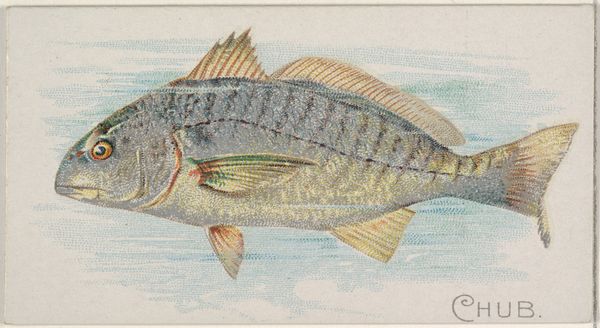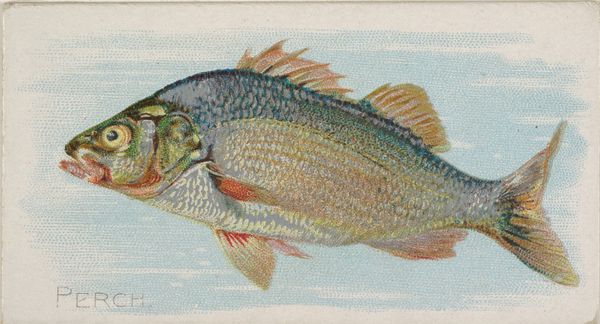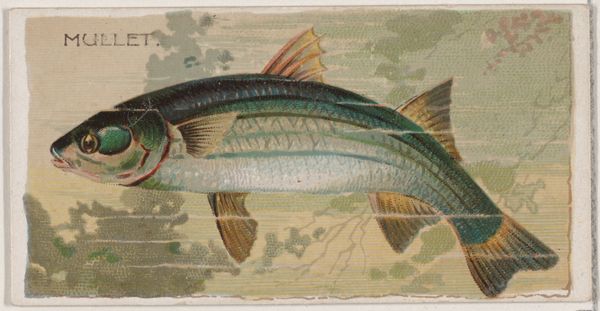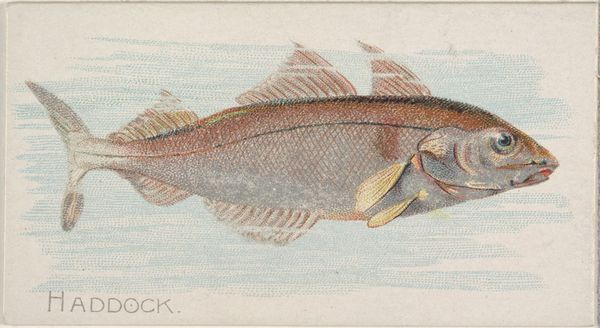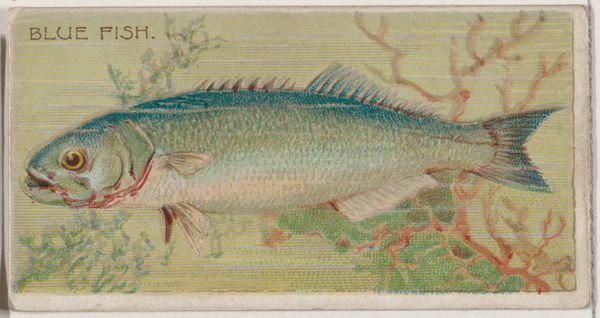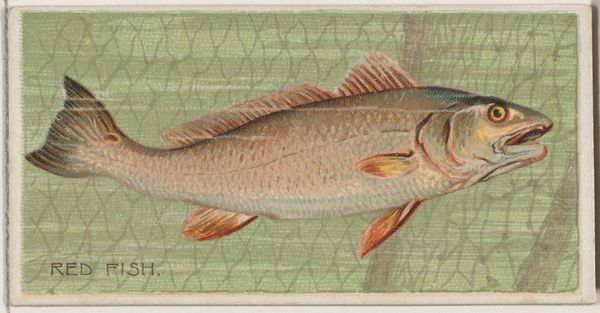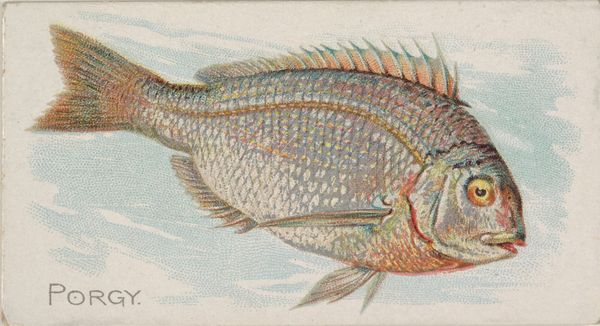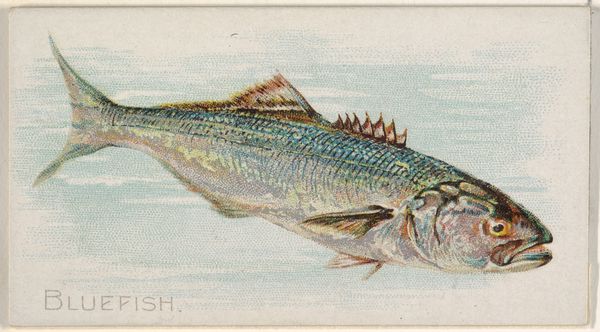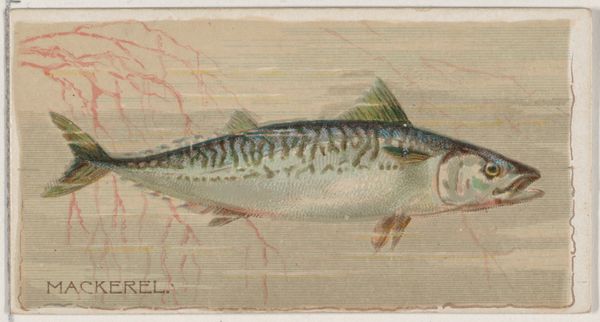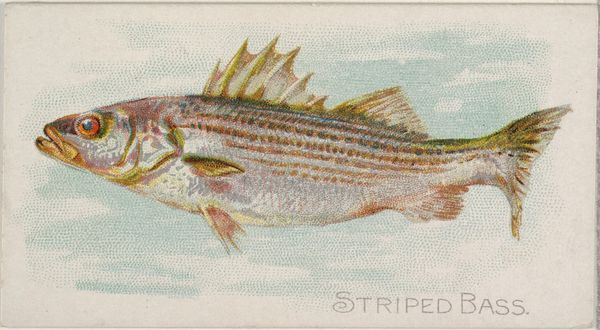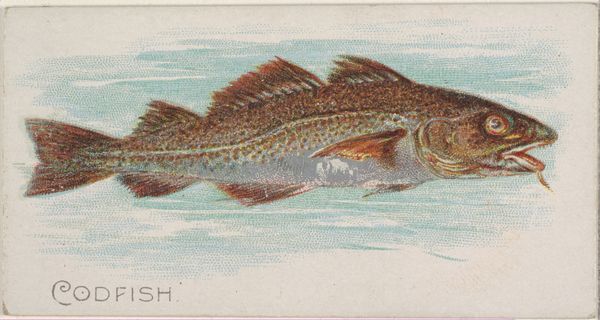
Shad, from the Fish from American Waters series (N8) for Allen & Ginter Cigarettes Brands 1889
0:00
0:00
Dimensions: Sheet: 1 1/2 x 2 3/4 in. (3.8 x 7 cm)
Copyright: Public Domain
Curator: Here we have "Shad, from the Fish from American Waters series (N8) for Allen & Ginter Cigarettes Brands," dating back to 1889. It's currently housed in the Metropolitan Museum of Art. Editor: My first impression is just how…delicate it feels. The textures are incredible for such a small format; almost like an artifact recovered from some lost civilization! Curator: That sense of 'artifact' might stem from the very deliberate crafting. This print, seemingly humble, comes from a series intended for cigarette cards. These were collected and traded like little glimpses into natural history and, frankly, commercial enterprise intertwined. We need to acknowledge the material means of production here, particularly the labor involved in cigarette production and marketing. Editor: Right, these weren’t meant for gallery walls! But speaking of its commercial purpose, what kind of narratives did circulating these images of Shad produce, and what power structures are inherently woven within them? How do representations of fish like this fit into 19th-century social and economic concerns, regarding foodways and natural resources for example? Curator: That's the critical point – who gets to see this? The workers rolling cigarettes, largely immigrant women, likely never handled the products adorned with these images they crafted. Meanwhile, a bourgeois customer consuming this imagery with his cigarettes simultaneously becomes familiar with, but distant from the labour making this reality. Editor: The colored pencil drawing almost gives the Shad a dreamy quality too. In conjunction with being produced and distributed on a card associated with cigarettes – we also ought to recognize this dreamy visual, along with its consumerist appeal – in alignment with the political dimensions related to the consumption and marketing of tobacco at the time. Curator: Precisely. Look at the detailed scale rendering, almost scientific in its precision, versus the idealized depiction. It becomes a form of colonial control over American wildlife, displayed conveniently as part of consumerism. These aren’t detached from the historical dispossession of Indigenous peoples from access to waterways and fishing rights either! Editor: Examining works such as the Shad is not simply about the artwork itself, but more so how we critically interrogate all things material as historical context. Curator: Absolutely, it reveals power dynamics disguised as commercial exchange. By examining production and labour in concert with the colonial implications around commercial tobacco imagery in relation to access and land dispossession, it also unveils critical questions.
Comments
No comments
Be the first to comment and join the conversation on the ultimate creative platform.
